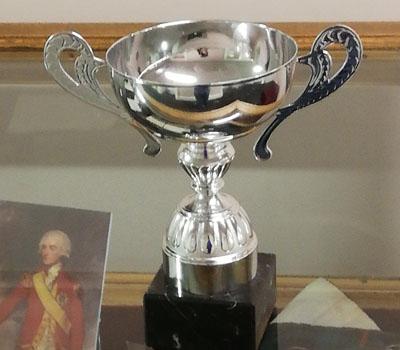The Cameron Cup kicks off
A new, and much coveted, award has been unveiled by the School of History, Classics and Archaeology.

Inspired by teaching a course on the global history of association football (aka soccer) from its 'invention' by the English Football Association in 1863, Dr Julius Ruiz decided to mark the end of teaching by organising a match according to the original 1863 rules.
Students from the course will be playing – the two sides are Newton Leith (Jono Gray, Captain) and Lister City (Oscar Silver, Captain) – although there will be no official team strips, just dress appropriate to a muddy game of football. Top hats optional.
Named, in the best Victorian tradition of deference to established authority after the current Head of School, the Cameron Cup will be vigorously fought for on Wednesday 28 November at 1pm on the Meadows near the tennis courts.
Dr Ruiz said, ‘Everyone is very welcome to cheer on, or play in, the game but participants are encouraged to read the 1863 rules, with particular reference to footwear.’
English Football Association Rules, 1863
- The maximum length of the ground shall be 200 yards, the minimum breadth shall be 100 yards, the length and breadth shall be marked off with flags; and the goals shall be defined by two upright posts, 8 yards apart, without a tape or bar across them.
- The winner of the toss shall have the choice of goals. The game shall be commenced by a place kick from the centre of the ground by the side losing the toss, the other side shall not approach within 10 yards of the ball until it is kicked off.
- After a goal is won the losing side shall kick off and goals shall be changed.
- A goal shall be won when the ball passes between the goal posts or over the space between the goal posts (at whatever height), not being thrown, knocked on, or carried.
- When the ball is in touch the first player who touches it shall throw it from the point on the boundary line where it left the ground, in a direction at right angles with the boundary line.
- When a player has kicked the ball any one of the same side who is nearer to the opponent's goal line is out of play and may not touch the ball himself nor in any way whatever prevent any other player from doing so until the ball has been played; but no player is out of play when the ball is kicked from behind the goal line.
- In case the ball goes behind the goal line, if a player on the side to whom the goal belongs first touches the ball, one of his side shall be entitled to a free kick from the goal line at the point opposite the place where the ball shall be touched. If a player of the opposite side first touches the ball, one of his side shall be entitled to a free kick (but at the goal only) from a point 15 yards from the goal line opposite the place where the ball is touched. The opposing side shall stand behind their goal line until he has had his kick.
- If a player makes a fair catch he shall be entitled to a free kick, provided he claims it by making a mark with his heel at once; and in order to take such kick he may go as far back as he pleases, and no player on the opposite side shall advance beyond his mark until he has kicked.
- No player shall carry the ball.
- Neither tripping nor hacking shall be allowed and no player shall use his hands to hold or push his adversary.
- A player shall not throw the ball or pass it to another.
- No player shall take the ball from the ground with his hands while it is in play under any pretence whatever.
- No player shall wear projecting nails, iron plates, or gutta percha on the soles or heels of his boots.
Definition of Terms
A place kick - Is a kick at the ball while it is on the ground, in any position in which the kicker may choose to place it.
A free kick - Is the privilege of kicking at the ball, without obstruction in such a manner as the kicker may think fit.
A fair catch - Is when the ball is caught after it has touched the person of an adversary, and before it has touched the ground or one of the side catching it; but if the ball is kicked from behind the goal line, a fair catch cannot be made.
Hacking - Is kicking an adversary intentionally.
Tripping - Is throwing an adversary by the use of the leg.
Knocking on - Is when a player strikes or propels the ball with his hands or arms.
Holding - Includes the obstruction of a player by the hand or any part of the arm below the elbow.
Touch - Is that part of the field on either side of the ground, which is beyond the line of flags.

